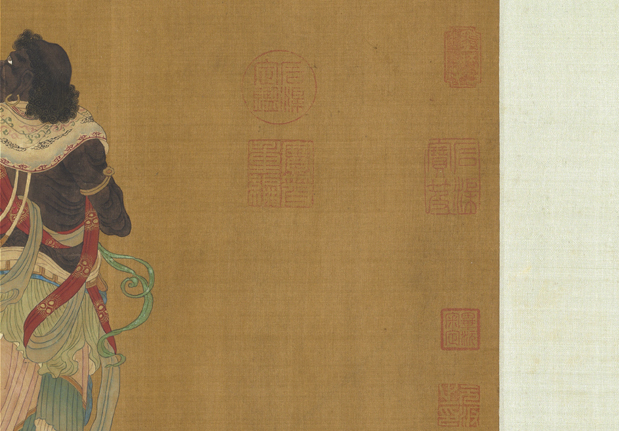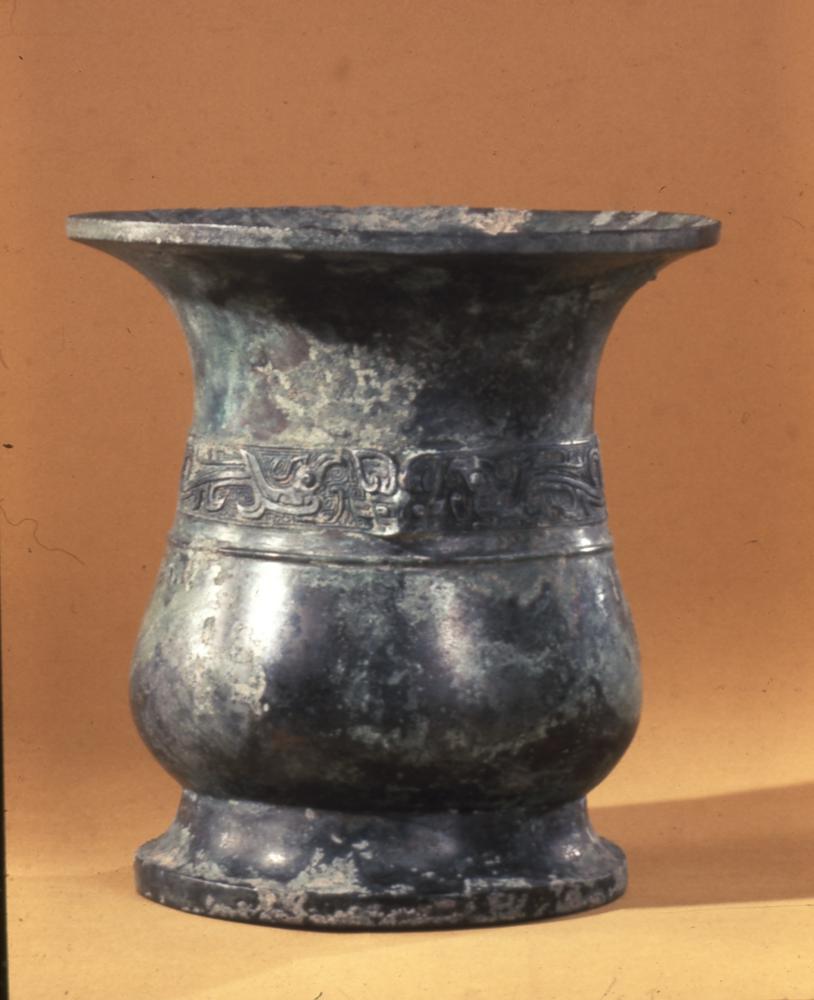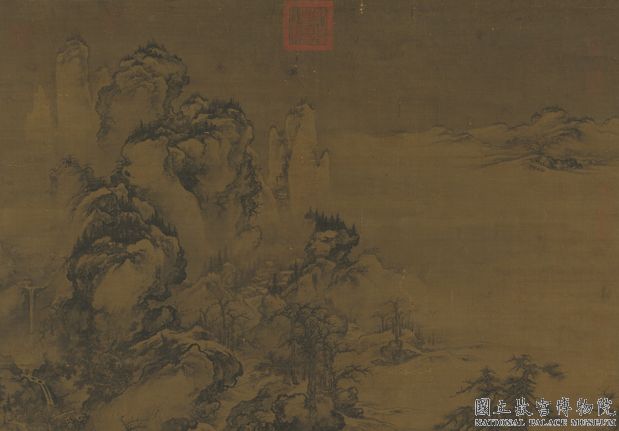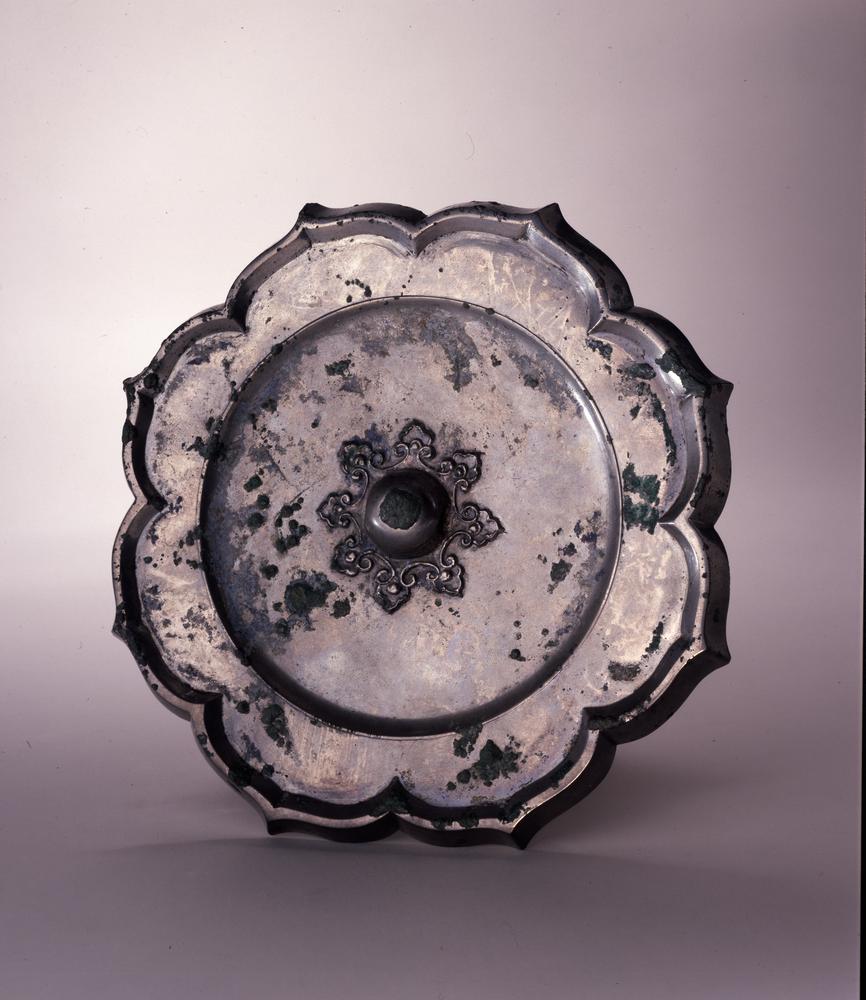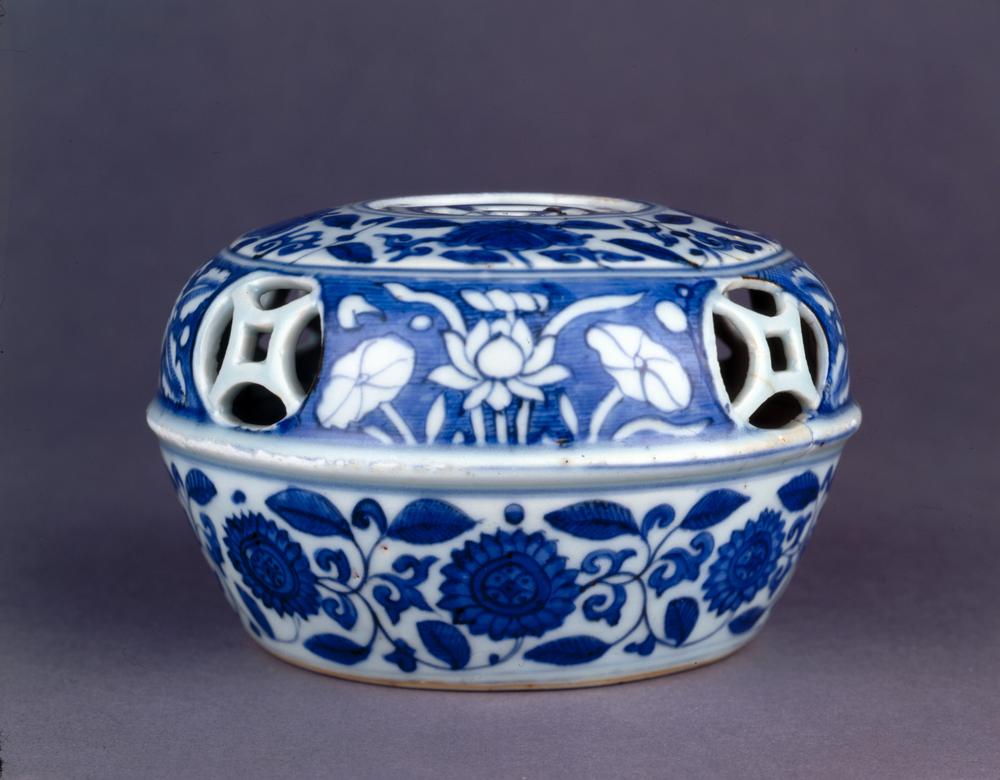Period:Five Dynasties and Ten Kingdoms Production date:10thC
Materials:paper, 紙 (Chinese), ivory (knobs),
Technique:painted
Subjects:bodhisattva hell 菩薩 (Chinese) 地獄 (Chinese) 國王/王后 (Chinese)
Dimensions:Height: 27.80 centimetres Width: 2.40 metres (length)
Description:
Painted handscroll illustrating the apochryphal Ten Kings of Hell Sutra. Five Kings seated behind their desks, with various punishments shown. The Six Ways of Life and a Hell scene follow, and the standing figure of Kṣitigarbha completes the composition. Ink and colour on paper. Ivory knobs.
IMG
![图片[1]-painting; 繪畫(Chinese); handscroll BM-1919-0101-0.80-China Archive](https://chinaarchive.net/Five Dynasties and Ten Kingdoms/Paintings/mid_00322984_001.jpg)
![图片[2]-painting; 繪畫(Chinese); handscroll BM-1919-0101-0.80-China Archive](https://chinaarchive.net/Five Dynasties and Ten Kingdoms/Paintings/mid_00567567_001.jpg)
![图片[3]-painting; 繪畫(Chinese); handscroll BM-1919-0101-0.80-China Archive](https://chinaarchive.net/Five Dynasties and Ten Kingdoms/Paintings/mid_00567571_001.jpg)
![图片[4]-painting; 繪畫(Chinese); handscroll BM-1919-0101-0.80-China Archive](https://chinaarchive.net/Five Dynasties and Ten Kingdoms/Paintings/mid_00567572_001.jpg)
![图片[5]-painting; 繪畫(Chinese); handscroll BM-1919-0101-0.80-China Archive](https://chinaarchive.net/Five Dynasties and Ten Kingdoms/Paintings/mid_00567620_001.jpg)
![图片[6]-painting; 繪畫(Chinese); handscroll BM-1919-0101-0.80-China Archive](https://chinaarchive.net/Five Dynasties and Ten Kingdoms/Paintings/mid_RFC688_2.jpg)
![图片[7]-painting; 繪畫(Chinese); handscroll BM-1919-0101-0.80-China Archive](https://chinaarchive.net/Five Dynasties and Ten Kingdoms/Paintings/mid_RFC688_3.jpg)
![图片[8]-painting; 繪畫(Chinese); handscroll BM-1919-0101-0.80-China Archive](https://chinaarchive.net/Five Dynasties and Ten Kingdoms/Paintings/mid_RFC688_4.jpg)
![图片[9]-painting; 繪畫(Chinese); handscroll BM-1919-0101-0.80-China Archive](https://chinaarchive.net/Five Dynasties and Ten Kingdoms/Paintings/mid_RFC688_5.jpg)
![图片[10]-painting; 繪畫(Chinese); handscroll BM-1919-0101-0.80-China Archive](https://chinaarchive.net/Five Dynasties and Ten Kingdoms/Paintings/mid_RFC688_6.jpg)
![图片[11]-painting; 繪畫(Chinese); handscroll BM-1919-0101-0.80-China Archive](https://chinaarchive.net/Five Dynasties and Ten Kingdoms/Paintings/mid_RFC688_8.jpg)
![图片[12]-painting; 繪畫(Chinese); handscroll BM-1919-0101-0.80-China Archive](https://chinaarchive.net/Five Dynasties and Ten Kingdoms/Paintings/mid_RFC688_9.jpg)
Comments:Zwalf 1985The Dunhuang handscrolls showing the Ten Kings of the Underworld appear late in the iconography of the Bodhisattva Kṣitigarbha. In this fragment five kings are each seated behind a table, attended by the recorders of a person’s good and evil deeds and by lictors and gaolers driving the souls before the court. Some souls wear wooden cangues and hand fetters; all have only a loincloth. The virtuous are in 10th-century costume; the men hold bundles of scrolls, the women small Buddha images in token of their meritorious deeds. Kṣitigarbha, dressed as a monk, appears at the end of the scroll, rescuing souls from hell.
Materials:paper, 紙 (Chinese), ivory (knobs),
Technique:painted
Subjects:bodhisattva hell 菩薩 (Chinese) 地獄 (Chinese) 國王/王后 (Chinese)
Dimensions:Height: 27.80 centimetres Width: 2.40 metres (length)
Description:
Painted handscroll illustrating the apochryphal Ten Kings of Hell Sutra. Five Kings seated behind their desks, with various punishments shown. The Six Ways of Life and a Hell scene follow, and the standing figure of Kṣitigarbha completes the composition. Ink and colour on paper. Ivory knobs.
IMG
![图片[1]-painting; 繪畫(Chinese); handscroll BM-1919-0101-0.80-China Archive](https://chinaarchive.net/Five Dynasties and Ten Kingdoms/Paintings/mid_00322984_001.jpg)
![图片[2]-painting; 繪畫(Chinese); handscroll BM-1919-0101-0.80-China Archive](https://chinaarchive.net/Five Dynasties and Ten Kingdoms/Paintings/mid_00567567_001.jpg)
![图片[3]-painting; 繪畫(Chinese); handscroll BM-1919-0101-0.80-China Archive](https://chinaarchive.net/Five Dynasties and Ten Kingdoms/Paintings/mid_00567571_001.jpg)
![图片[4]-painting; 繪畫(Chinese); handscroll BM-1919-0101-0.80-China Archive](https://chinaarchive.net/Five Dynasties and Ten Kingdoms/Paintings/mid_00567572_001.jpg)
![图片[5]-painting; 繪畫(Chinese); handscroll BM-1919-0101-0.80-China Archive](https://chinaarchive.net/Five Dynasties and Ten Kingdoms/Paintings/mid_00567620_001.jpg)
![图片[6]-painting; 繪畫(Chinese); handscroll BM-1919-0101-0.80-China Archive](https://chinaarchive.net/Five Dynasties and Ten Kingdoms/Paintings/mid_RFC688_2.jpg)
![图片[7]-painting; 繪畫(Chinese); handscroll BM-1919-0101-0.80-China Archive](https://chinaarchive.net/Five Dynasties and Ten Kingdoms/Paintings/mid_RFC688_3.jpg)
![图片[8]-painting; 繪畫(Chinese); handscroll BM-1919-0101-0.80-China Archive](https://chinaarchive.net/Five Dynasties and Ten Kingdoms/Paintings/mid_RFC688_4.jpg)
![图片[9]-painting; 繪畫(Chinese); handscroll BM-1919-0101-0.80-China Archive](https://chinaarchive.net/Five Dynasties and Ten Kingdoms/Paintings/mid_RFC688_5.jpg)
![图片[10]-painting; 繪畫(Chinese); handscroll BM-1919-0101-0.80-China Archive](https://chinaarchive.net/Five Dynasties and Ten Kingdoms/Paintings/mid_RFC688_6.jpg)
![图片[11]-painting; 繪畫(Chinese); handscroll BM-1919-0101-0.80-China Archive](https://chinaarchive.net/Five Dynasties and Ten Kingdoms/Paintings/mid_RFC688_8.jpg)
![图片[12]-painting; 繪畫(Chinese); handscroll BM-1919-0101-0.80-China Archive](https://chinaarchive.net/Five Dynasties and Ten Kingdoms/Paintings/mid_RFC688_9.jpg)
Comments:Zwalf 1985The Dunhuang handscrolls showing the Ten Kings of the Underworld appear late in the iconography of the Bodhisattva Kṣitigarbha. In this fragment five kings are each seated behind a table, attended by the recorders of a person’s good and evil deeds and by lictors and gaolers driving the souls before the court. Some souls wear wooden cangues and hand fetters; all have only a loincloth. The virtuous are in 10th-century costume; the men hold bundles of scrolls, the women small Buddha images in token of their meritorious deeds. Kṣitigarbha, dressed as a monk, appears at the end of the scroll, rescuing souls from hell.
© Copyright
The copyright of the article belongs to the author, please keep the original link for reprinting.
THE END
![[Qing Dynasty] British female painter—Elizabeth Keith, using woodblock prints to record China from the late Qing Dynasty to the early Republic of China—1915-China Archive](https://chinaarchive.net/wp-content/uploads/2022/11/image-191x300.png)
